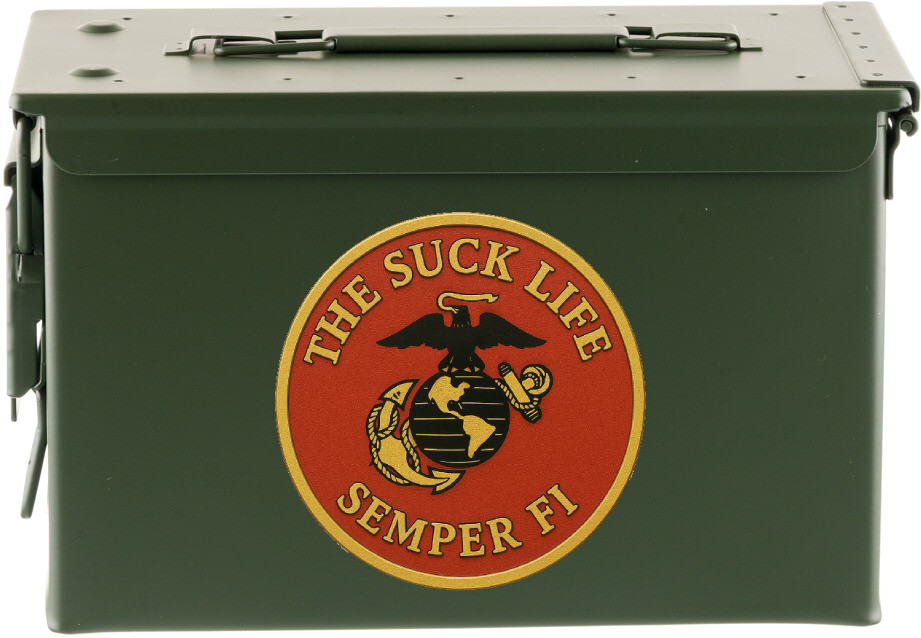1898-1934, The Schoolroom Nobody Talks About
When you think of Marine Corps history, your mind probably drifts to Iwo Jima, Chosin Reservoir, or Fallujah. But between the Spanish American War and the great storm of World War Two, the Corps was fighting a very different kind of war, dozens of them, in places most Americans could not point to on a map.
They came to be called the Banana Wars, a throwaway name for what turned out to be the most important schooling the Marine Corps ever received.
Why “Banana Wars”?
The name rose from cold economic truth. American fruit companies, especially the United Fruit Company, held vast plantations and railways and ports across the Caribbean and Central America. When political chaos threatened those interests, or when European powers looked ready to plant a flag in the region and brush against the Monroe Doctrine, the Marines went in.
Between 1898 and 1934, the Corps carried out operations in:
Cuba (1906, 1909, 1912, 1917, 1922)
Nicaragua (1909, 1910, 1912, 1933)
Haiti (1915, 1934)
Dominican Republic (1916, 1924)
Mexico (1914 at Veracruz)
Panama (several interventions)
Plus shorter actions in Honduras, Guatemala, and other corners of the Caribbean basin
Some missions lasted weeks. Others, years. Haiti alone wore nineteen of them.
The Real Lesson, Building an Expeditionary Force
What makes the Banana Wars matter is not the politics, complicated and often bitter, but what these campaigns taught the Corps about being America’s quick turning, ship to shore, go anywhere force.
Before this era, the Marines were mostly naval infantry, detachments aboard ships, guards at embassies, landing parties on short errands. Afterward, they were a true expeditionary arm, carrying doctrine, confidence, and a rugged style of problem solving that would shape the fights that defined modern amphibious warfare.
Here is what they learned.
1. Amphibious Warfare and Ship to Shore Rhythm
Almost every operation began the same way, stepping from ship to surf. Landings at Veracruz in 1914, repeated arrivals in Haiti and Nicaragua, careful coordination between naval guns and infantry movements. These repetitions carved muscle memory into the Corps.
So by the time World War Two cracked open, the Marines had decades of practice no one else could match. Guadalcanal, Tarawa, Iwo Jima, they were not improvisations. They were the echoes of lessons whispered by Caribbean winds.
2. Small Unit Leadership
A captain might hold an entire Nicaraguan town for months without an officer above him to lean on. A lieutenant might spend his morning negotiating road work in halting Spanish, then slip into the bush in the afternoon leading a patrol after guerrillas.
The Banana Wars forged Marines who could think on their feet, operate alone, blend hard and soft power, and carry responsibility far heavier than their rank.
3. Counterinsurgency and Guerrilla Knowledge
These Marines were not fighting neat formations. They were chasing men like Augusto César Sandino in Nicaragua or Charlemagne Péralte in Haiti, fighters who knew every ridge, every switchback, every loyal village.
The Marines learned:
Jungle and mountain patrolling
Gathering intelligence from locals
Training and building local forces such as the Haitian Gendarmerie and the Nicaraguan Guardia Nacional
Winning favor through public works
Cordon and search tactics
Night ambushes and swift, small unit strikes
These lessons later crystallized into the Small Wars Manual of 1940, a text used again in Vietnam, Iraq, and Afghanistan.
4. Combined Arms and Early Innovation
These faraway campaigns became proving grounds for new tools and new thinking.
Aviation grew teeth as Marine pilots flew reconnaissance in Haiti and Nicaragua, calling movements to the ground and learning the early language of close air support.
Early radios crackled through jungle humidity, letting commanders knit together scattered patrols.
Operations began to weave Navy ships, Marine infantry, air support, and local forces into a single moving organism.
The Names You Know, and Those You Should
Smedley Butler is the loudest name, the Fighting Quaker with two Medals of Honor who later condemned the very interventions he had led. But he was not alone.
Herman Hanneken, the sergeant who slipped into a Haitian rebel camp and brought down Charlemagne Péralte in 1919.
Lewis B, Chesty, Puller, who learned the art of the patrol in Haiti and Nicaragua before becoming the most decorated Marine in history.
And countless corporals, sergeants, lieutenants, men whose names barely show in the margins of history, yet carried the weight of their nation in lonely outposts.
What It Actually Looked Like
Imagine a Marine detachment in Nicaragua in 1928:
A company of about one hundred Marines holds a town. Half guard the port, the airstrip, the American consulate. The rest rotate through three day patrols, climbing dusty mountain trails and threading through coffee groves looking for Sandino’s fighters.
The company commander haggles with the mayor over a bridge repair because without it, supplies stall. A gunnery sergeant teaches Guardia recruits to shoot straight. A young lieutenant watches the treasury books like a hawk to keep corruption from swallowing them.
Then word comes, rebels sighted ten miles west.
Within hours a reinforced platoon is on the march, packs heavy, weapons checked, villagers hired as guides. They will walk through the night, set an ambush at dawn, and if luck sits on their shoulder, return in three suns.
This was not a scene from a movie. For them, it was simply Tuesday.
The Complicated Legacy
We cannot speak of the Banana Wars without facing the truth. These were imperial actions. The United States sent Marines to guard business interests and preserve influence. Civilians suffered. Governments installed were not democratic. The legacy in Haiti and Nicaragua still carries scars.
Smedley Butler himself said it, “I spent most of my time being a high class muscle man for Big Business, for Wall Street and for the Bankers.”
But from a military lens, these years reshaped the Corps. The Marines learned expeditionary work by living it again and again in every corner of the Caribbean basin.
When World War Two demanded a force that could hit beaches, operate alone, and thrive in chaos, the Corps already had the blueprint, written in the dust of Cap Haïtien and the foothills of Ocotal.
Why It Still Matters
Today’s Marine Corps, the Marine Expeditionary Units that glide across the oceans, the promise that every Marine is a rifleman, the binding of air and ground, the fierce pride in small unit leadership, all of it roots back to the hard classrooms of the Banana Wars.
So the next time you hear of Marines deploying for a hurricane relief mission, reinforcing an embassy, or standing watch in some distant crisis, remember this, this is what they were shaped for. And the shaping began long ago in jungles and towns most Americans will never know by name.
Semper Fi!
Cpl Beddoe

Ads suck. This site is 100% ad-free and reader-supported.
If this article added value to your day or meant something to you, toss a couple bucks in the ammo can to keep us in the fight. Thank you.




 Semper Fidelis
Semper Fidelis

